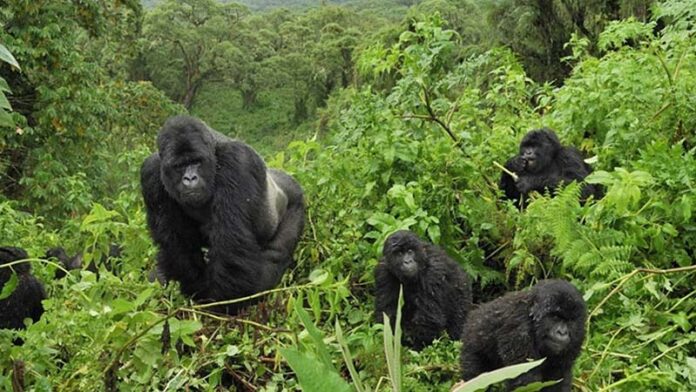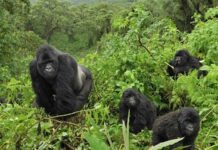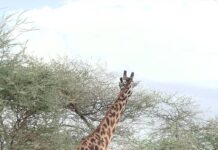East Africa offers a diverse range of must-see attractions, from wildlife to cultural experiences and natural wonders. East Africa is a treasure trove of natural beauty, wildlife, history and culture. If you are traveling around the region which typically includes Kenya, Tanzania, Uganda and Rwanda, here are the must-see attractions:
KENYA
Kenya, the heart of the African safari is a country of breathtaking landscapes, rich cultures and an incredible diversity of wildlife. Offering a fusion of tradition and modernity, it is a destination that appears attractive to travelers with the promise of adventure. Here is a list of some of the must-see attractions for anyone interested in exploring this majestic land.
Masai Mara National Reserve: This one is known for its incredible wildlife especially the annual wildebeest migration. This vast grassland teems with zebras, gazelles, lions and elephants hence offering an unparalleled safari experience. Guided tours conducted in this area provide opportunities to witness the natural annual spectacle and also learn about the Maasai people’s culture.
Amboseli National Park: Famous for its stunning views of Mount Kilimanjaro and large herds of elephants, Amboseli National Park is a jewel in Kenya’s crown. Tours here involve wildlife viewing against the backdrop of Africa’s highest peak a truly majestic sight.
Laikipia Plateau: Laikipia is a vast plateau that lies in central Kenya known for its rich diversity of wildlife and unique conservation efforts. The area offers a more exclusive and private safari experience with various conservancies and luxury lodges. Here you can spot lions, elephants, giraffes and even rare species such as the African wild dog. Visitors can enjoy a variety of activities including driving, walking, horse riding, camel riding, hiking, mountain biking, fly camping, helicopter rides, tubing and cultural visits.
Diani Beach: A beautiful stretch of white sand beach on the Indian Ocean. Stretching approximately 17 kilometers from the Kongo River in the north to Galu Beach in the south, it offers a blend of relaxation, adventure and cultural experiences. Diani Beach boasts a lot of water sports and marine activities such as Kitesurfing, Windsurfing, Snorkeling, Diving among others.
Lake Nakuru National Park: Home to thousands of flamingos and other bird species as well as rhinos and lions. Tours to this alkaline lake also offer sightings of leopards and more other wildlife species hence making it a prime bird-watching and wildlife destination.
Tsavo National Parks: Split into East and West, these parks offer diverse landscapes and abundant wildlife including the “red elephants” of Tsavo East. Home to large populations of elephants, lions and cheetahs. These parks are less crowded than Maasai Mara hence offering a more tranquil safari experience.
Lamu Island: A UNESCO World Heritage Site with its well-preserved Swahili architecture and rich cultural history. Tours here are a step back in time, exploring the narrow streets of this ancient town.
Nairobi: The capital city of Kenya, offering a mix of modern attractions, such as the Nairobi National Museum and wildlife experiences at the Nairobi National Park. Visitors can explore the city’s museums and art galleries, go shopping and visit the famous Nairobi National Park which is home to a wide variety of wildlife including lions, leopards and rhinos.
Nairobi National Park. Nairobi National Park is home to a stunning diversity of wildlife. Across the grassy plains, you will find endangered black rhinos, hyenas, cheetahs, giraffes and over 400 species of birds. There are plenty of trails for hikers as well as picnic sites for you to enjoy a snack or meal. For the best visibility of wildlife, it is recommended to visit the park during morning hours.
Mount Kenya: The second highest peak in Africa, popular for hiking and climbing. Tours to Africa’s second-highest peak involve scenic hikes through alpine meadows and rugged terrain with stunning views from the summit.
Samburu National Reserve: The reserve is known for its unique wildlife species including the “Samburu Five” that’s; Grevy’s zebra, Somali ostrich, reticulated giraffe, Beisa oryx and gerenuk. Located in the Northern part of Kenya, this reserve is also known for housing Samburu people, a semi-nomadic ethnic group known for their customs and culture.
Hell’s Gate National Park: The park is famous for its towering cliffs, gorge walks and hot springs as well as being the inspiration for Disney’s “The Lion King. This park is an ideal base for hiking, rock climbing and cycling tours.
Lake Naivasha. Lake Naivasha is a beautiful freshwater lake. It is the highest of the Rift Valley Lakes, although reasonably shallow with the depth varying dependent upon rainfall. The lake itself is not technically a national park as most of the land around it is privately owned. Only 100 km from Nairobi, Lake Naivasha has become a popular recreational area for Kenyans/visitors with a yacht club, private cruisers and fishing boats. Naivasha is a birdwatchers dream with over 450 species in the area. The water also attracts a lot of wildlife such as giraffes, colobus monkeys, hippos and buffalo which are most commonly spotted.
Fort Jesus, Mombasa. In the coastal city of Mombasa, Fort Jesus stands as a symbol of the historical Portuguese influence in Kenya. This well-preserved fortification offers a glimpse into the colonial era, with guided tours detailing its rich history.
The Aberdare National Park. Aberdare National Park is known for its high-altitude forests and waterfalls and it offers a different side of Kenya’s wildlife. Tours here involve hiking, bird watching and spotting elephants and leopards in the dense forests.
Kenyan Coastline. The Kenyan coastline offers a blend of relaxation and water sports. With its pristine beaches such as Diani Beach, tours here include snorkeling, diving and dhow cruises perfect for exploring the vibrant marine life of the Indian Ocean.
Karen Blixen Museum. Anyone interested in history and learning more about living in Africa, the Karen Blixen Museum is a perfect attraction. It is the former home of Karen Blixen, a Danish author who came to fame with the publication of her 1937 book Out of Africa which was turned into a film in 1985. Guests are welcome to walk through the museum on their own or participate in a guided tour. The Karen Blixen Museum is open daily from 9:30 a.m. until 6 p.m.
TANZANIA
Tanzania is an East African country known for its vast wilderness areas and stunning landscapes from the plains of the Serengeti to the peaks of Kilimanjaro. Whether you are an adventure seeker, a wildlife enthusiast or simply looking to immerse yourself in local culture, Tanzania offers a rich tapestry of experiences. Explore the most remarkable tourist destinations in Tanzania.
Serengeti National Park: Known for its incredible wildlife and the annual wildebeest migration, the Serengeti is a must- see destination for nature lovers and safari enthusiasts.
Mount Kilimanjaro: The highest peak in Africa, Kilimanjaro offers breathtaking views and a challenging trek for adventure seekers.
Zanzibar: This tropical paradise is famous for its pristine beaches, turquoise waters, and rich cultural heritage.
Ngorongoro Conservation Area: A UNESCO World Heritage Site, the Ngorongoro Crater is a unique ecosystem that supports a diverse range of wildlife, including the endangered black rhino.
Tarangire National Park: With its large elephant population, baobab trees and stunning landscapes, Tarangire is a hidden gem for wildlife enthusiasts.
Lake Manyara National Park: Known for its tree-climbing lions, flamingos and diverse birdlife, Lake Manyara offers a unique safari experience.
Selous Game Reserve: One of the largest game reserves in Africa, Selous is a haven for wildlife, offering boat safaris, walking safaris, and game drives.
Ruaha National Park: With its untouched wilderness and abundant wildlife, Ruaha is a remote and off-the-beaten-path destination for safari lovers.
Mahale Mountains National Park: Home to wild chimpanzees, Mahale Mountains is a remote and pristine park for trekking and primate-watching.
Mikumi National Park: Located close to Dar es Salaam, Mikumi is a convenient option for a short safari trip, offering a variety of wildlife sightings.
UGANDA
Uganda offers a diverse range of attractions for travelers, from wildlife parks to cultural sites and historical landmarks. Some must-see places include Murchison Falls National Park for game viewing and boat safaris and Queen Elizabeth National Park, home to tree-climbing lions and diverse wildlife. Additionally, Bwindi Impenetrable Forest is famous for gorilla trekking while Kibale National Park offers chimpanzee tracking. Other notable attractions include the Source of the Nile in Jinja, Nyero Rock Paintings and the Uganda Museum.
Bwindi Impenetrable Forest. Bwindi Impenetrable Forest is a UNESCO World Heritage Site renowned for its rich biodiversity and dense tropical rainforest. Spanning over 320 square kilometers, it is one of Africa’s oldest forests, dating back over 25,000 years. The forest is most famous for harboring nearly half of the world’s remaining mountain gorillas, making it a prime destination for eco-tourism and gorilla trekking. Bwindi is also home to over 350 bird species, 200 butterfly species and numerous rare flora. Its rugged terrain and thick vegetation provide a sanctuary for many endangered species, making it a critical conservation area.
Murchison Falls National Park. Murchison Falls National Park is the Uganda’s largest and oldest national park located in the northwestern region of the country. Covering approximately 3,893 square kilometers, it is named after the dramatic Murchison Falls, where the Nile River bursts through a narrow gorge and plunges 43 meters. The park boasts diverse ecosystems including savannah, wetlands and tropical forests supporting abundant wildlife such as elephants, lions, giraffes, hippos, crocodiles and over 450 bird species. Game drives, boat cruises along the Nile, and hikes to the falls offer visitors unforgettable experiences. Murchison Falls National Park is a key site for both tourism and conservation.
Queen Elizabeth National Park. Queen Elizabeth National Park, located in western Uganda is one of the country’s most popular and diverse protected areas. Spanning around 1,978 square kilometers, it features a variety of landscapes including savannah, wetlands, crater lakes, and forests. The park is home to over 95 mammal species including elephants, lions (notably tree-climbing lions in the Ishasha sector), leopards and hippos as well as more than 600 bird species. The Kazinga Channel which connects Lake Edward and Lake George, offers excellent boat safari opportunities. Queen Elizabeth National Park is a vital conservation area and a major hub for wildlife tourism in Uganda.
Kibale National Park. Kibale National Park located in western Uganda, is renowned for its rich primate diversity and lush tropical rainforest. Covering about 795 square kilometers, the park is home to about 13 primate species including the largest population of chimpanzees in Uganda. Visitors can engage in guided chimpanzee trekking, offering close encounters with these intelligent primates. The park also hosts over 375 bird species, forest elephants and various monkeys like red colobus and L’Hoest’s monkey. Kibale’s diverse ecosystems range from lowland and montane forests to swampy areas, making it a key site for ecological research, conservation and eco-tourism in East Africa.
Source of the River Nile. The Source of the River Nile in Jinja is one of the most iconic natural landmarks in Africa. It marks the point where the world’s longest river begins its 6,650 km journey from Lake Victoria toward the Mediterranean Sea. Discovered by explorer John Hanning Speke in 1858, this historic site attracts both tourists and adventure seekers. The area offers activities like boat rides to the actual source, white-water rafting, kayaking, and bungee jumping. Surrounded by lush scenery and vibrant local culture, the Source of the Nile is not only a geographical marvel but also a hub for tourism and recreation.
Nyero Rock Paintings. The Nyero Rock Paintings located in eastern Uganda near Kumi town are a significant prehistoric archaeological site. Dating back to the Iron Age, these ancient geometric paintings are attributed to early hunter-gatherer communities, possibly the ancestors of the Batwa people. The site features six rock shelters with the most prominent being Nyero 1, 2 and 3, adorned with red and white pigment symbols like concentric circles and canoes. The paintings offer insights into early human expression and belief systems. Protected as a cultural heritage site, Nyero Rock Paintings attract historians, archaeologists and tourists, reflecting Uganda’s deep-rooted and rich historical legacy.
The Uganda Museum. The Uganda Museum located in Kampala is the oldest museum in East Africa, established in 1908. It serves as a key cultural institution, preserving and showcasing Uganda’s rich heritage and history. The museum features a wide range of exhibits including ethnography, archaeology, paleontology and traditional music instruments. Highlights include ancient tools, traditional clothing, ceremonial artifacts and fossils that trace human and animal evolution in the region. The outdoor section displays traditional huts representing various Ugandan tribes. Educational and engaging, the Uganda Museum offers a comprehensive insight into the country’s diverse cultures, making it an essential stop for history and culture enthusiasts.
Other attractions include; Mabira Forest, Mabamba swamp, Ziwa Rhino Sanctuary (the only place in Uganda to see wild rhinos), Ssese Islands, Lake Bunyonyi, Sipi Falls, Rwenzori Mountains, Kasubi Tombs, Namugongo Martyrs Shrine among others.
RWANDA
Rwanda, the “Land of a Thousand Hills,” is brimming with awe-inspiring landscapes, vibrant culture and remarkable history. Whether you are an adventure seeker, wildlife lover or history buff, Rwanda offers an unforgettable combination of experiences that will give unforgettable memories.
Volcanoes National Park. Volcanoes National Park is one of the most famous tourist attractions in Rwanda, offering a unique wildlife experience. Located in the Virunga Mountains, the park is home to the mountain gorillas, providing visitors with a rare chance to go on gorilla trekking adventure. Apart from gorilla trekking, tourists can also enjoy golden monkey trekking, scenic hikes, visit to the Dian Fossey Tomb among other activities. This park is one of the most breathtaking tourist attractions in Rwanda, blending conservation efforts with unforgettable encounters. Whether trekking through lush forests or admiring the biodiversity, it remains as a must-see attraction for nature lovers.
Akagera National Park. Akagera National Park is Rwanda’s only Big Five safari destination, making it one of the most exciting tourist attractions in Rwanda. Being a home to lions, leopards, elephants, rhinos and buffaloes, the park offers visitors an incredible wildlife safari experience. Apart from game drives, Akagera features picturesque landscapes including rolling savannahs, lakes and swamps. A boat cruise on Lake Ihema presents an opportunity to see hippos and crocodiles in their natural habitat. Akagera is a spectacular highlight among tourist attractions in Rwanda, seamlessly combining conservation and luxury, making it a perfect getaway for both adventure seekers and relaxation lovers.
Nyungwe Forest National Park. Nyungwe Forest National Park is one of Africa’s oldest rainforests and a prized gem among tourist attractions in Rwanda. This pristine park boasts activities like chimpanzee trekking, canopy walks and nature hikes. Visitors can explore the dense forest and encounter over 13 primate species including colobus monkeys and golden monkeys. Birdwatchers will marvel at the park’s rich avian diversity, featuring rare species. Nyungwe’s breathtaking landscapes and untouched beauty solidify its place among the top tourist attractions in Rwanda, offering travelers a chance to connect with nature in one of Africa’s most biodiverse ecosystems.
Kigali Genocide Memorial. The Kigali Genocide Memorial stands as one of the most impactful tourist attractions in Rwanda offering visitors a deep and emotional insight into the country’s tragic past. This memorial honors the victims of the 1994 genocide, providing exhibits that recount Rwanda’s history, resilience and recovery. A guided tour through the memorial introduces visitors to personal stories, artifacts and educational resources that highlight the importance of remembrance and reconciliation. This memorial works as a place for mourning as well as a beacon of hope for future generations.
Lake Kivu. Lake Kivu is one of the most beautiful tourist attractions in Rwanda offering breathtaking views and opportunities for relaxation. As one of Africa’s Great Lakes, it provides a perfect setting for kayaking, boat trips and lakeside retreats. Tourists can explore Rubavu, Karongi and Kibuye, each featuring picturesque resorts with stunning waterfront landscapes. Lake Kivu’s tranquil atmosphere makes it a must-see attraction among tourist attractions in Rwanda, ideal for unwinding after an adventure-packed safari. Whether enjoying a sunset cruise or engaging in water sports, visitors will find the lake to be a serene and also have unforgettable experience.
King’s Palace Museum. The King’s Palace Museum in Nyanza is one of the most culturally significant tourist attractions in Rwanda, showcasing the nation’s rich pre-colonial history. This reconstructed royal palace presents insights into traditional Rwandan architecture and heritage, featuring elegant thatched-roof structures and regal interiors. Visitors can learn about Rwanda’s monarchy, customs and the iconic Inyambo cattle known for their long horns and royal significance. As one of the top tourist attractions in Rwanda, the museum provides a unique opportunity to engage with history, offering an immersive experience into the past of Rwanda’s royal families and their traditions.
Ethnographic Museum. The Ethnographic Museum in Huye is one of the most enriching tourist attractions in Rwanda, offering deep insights into the country’s cultural heritage. As Rwanda’s largest museum, it displays traditional artifacts, tools and exhibits that trace the nation’s historical development. Visitors can explore various sections showcasing ancient craftsmanship, music and customs making it a fascinating stop for history enthusiasts. Among the many tourist attractions in Rwanda, this museum is an essential visit for those interested in learning about Rwanda’s identity through its preserved cultural artifacts and stories. A visit here ensures a profound appreciation of Rwanda’s past and traditions.
Inema Arts Center. Inema Arts Center is a vibrant cultural hub and one of the most exciting tourist attractions in Rwanda. Located in Kigali, this contemporary art gallery showcases the talents of local artists through paintings, sculptures and mixed-media exhibits. The center is an important space for creativity, offering workshops and interactive art experiences for visitors. This center provides insight into Rwanda’s modern artistic movement, highlighting themes of identity, resilience and innovation. Inema Arts Center allows travelers to engage with Rwanda’s thriving arts scene and appreciate the country’s evolving creative expression.
Kimironko Market. Kimironko Market is a bustling local market and a must-see among tourist attractions in Rwanda. This vibrant marketplace in Kigali offers an authentic experience where visitors can buy fresh produce, textiles and handcrafted souvenirs. Walking through the lively stalls, travelers interact with vendors selling colorful fabrics, aromatic spices and handmade baskets, showcasing Rwanda’s rich trading culture. Kimironko Market presents an opportunity to engage with the local community, taste Rwandan flavors and pick up unique gifts. It is the perfect spot for an immersive cultural shopping experience.
Musanze Caves. Musanze Caves are one of the most fascinating tourist attractions in Rwanda, offering underground adventure. These ancient lava tunnels were formed by volcanic activity thousands of years ago and provide a unique opportunity to explore Rwanda’s geological history. Tourists can walk through dark passages lined with stalactites and stalagmites, guided by experts who explain the caves’ significance. Among the best tourist attractions in Rwanda, Musanze Caves deliver a combination of history, mystery and adventure.
Iby’Iwacu Cultural Village. Iby’Iwacu Cultural Village is an immersive experience and one of the top tourist attractions in Rwanda for travelers interested in local traditions. Located near Volcanoes National Park, the village showcases Rwanda’s cultural heritage through dance performances, traditional storytelling and interactive activities. Visitors can meet former poachers who have transitioned into conservation ambassadors, making this destination both educational and inspiring. As one of the most engaging tourist attractions in Rwanda, Iby’Iwacu offers a rare chance to participate in Rwandan customs firsthand. Whether learning local crafts or tasting traditional food, travelers leave with a deeper appreciation of Rwandan culture.
Congo Nile Trail. The Congo Nile Trail is one of the most scenic tourist attractions in Rwanda, offering breathtaking views along the shores of Lake Kivu. This stunning hiking and biking trail spans over 227 kilometers, winding through lush hills, coffee plantations and fishing villages. Visitors can embark on multi-day treks, enjoying the tranquility of nature while engaging with local communities. Among Rwanda’s best tourist attractions in Rwanda, the trail provides adventure seekers with an unforgettable journey through the country’s picturesque landscapes. Whether cycling or trekking, the Congo Nile Trail is a perfect blend of exploration, fitness and natural beauty.
Gishwati-Mukura National Park. Gishwati-Mukura National Park is one of the newest and most promising tourist attractions in Rwanda known for its rich biodiversity and stunning landscapes. This park is a home to chimpanzees, golden monkeys and numerous bird species, making it an exciting destination for wildlife enthusiasts. Visitors can explore scenic hiking trails, waterfalls and dense forests, gaining insight into Rwanda’s conservation efforts. Gishwati-Mukura offers an off-the-beaten-path adventure, perfect for travelers looking for a tranquil, eco-friendly experience in Rwanda’s lush, unspoiled wilderness.
Rwanda Art Museum. The Rwanda Art Museum at Kandt House is a historical gem among tourist attractions in Rwanda, offering visitors a blend of colonial-era architecture and modern artistic expression. This museum showcases a variety of traditional and contemporary artworks that reflect Rwanda’s cultural transformation over the years. The exhibitions include paintings, sculptures and mixed-media installations by talented Rwandan artists. The museum provides an engaging experience for art lovers and history fanatics, offering a glimpse into Rwanda’s evolving artistic identity and rich cultural heritage.
Nyamata and Ntarama Genocide Memorials. Nyamata and Ntarama Genocide Memorials are among the most significant tourist attractions in Rwanda, preserving the memory of those who lost their lives during the 1994 genocide. These sites, once churches, have been transformed into memorials that offer visitors a powerful, sobering insight into Rwanda’s tragic history. These memorials stand as places for reflection and education, ensuring that the lessons of the past remain alive for future generations committed to peace and unity.
Other attractions include; Rugezi Marsh, Bisesero Genocide Memorial, Mount Bisoke, Nyanza Royal Cow Pasture (Inyambo Cattle) among others.







